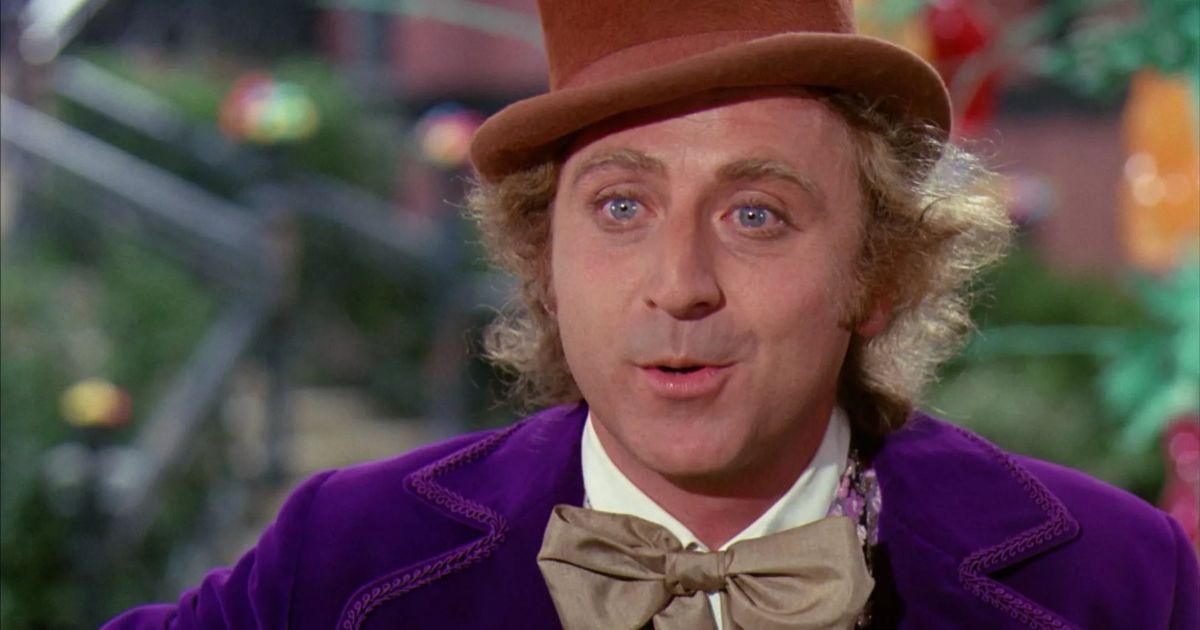Summary
- Charlie and the Chocolate Factory captivates all ages with whimsical adventures and fantastical settings.
- From unbridled adventure to dark sci-fi elements, the Dahl sequel teeters between wonder and fear.
- Great Glass Elevator journeys from sinister underworlds to outer space, pushing boundaries of whimsical fantasy.
It shouldn’t be a surprise to anybody as to why British author Roald Dahl’s children’s book Charlie and the Chocolate Factory has become such a world-renowned novel since being published in 1964. Putting aside the fact that the primary setting within Dahl’s fourth novel is a magical place where the most outlandish candies are made (a dream-like locale for any youngster who has a sweet tooth), there is also a sense of natural wonderment that just cannot be denied.
While children are easily swept up in the same rush of glee and anticipation that Charlie himself experiences while finding that coveted golden ticket, adults are taken as well by an overwhelming rush towards unbridled adventure — that they may have seemingly displaced for so long. No matter the age, fans of Dahl were quite lucky as they got to experience the Chocolate Factory once more in the form of a big-screen adaptation that was released in 1971.
Starring Gene Wilder as the great confectioner, Willy Wonka and the Chocolate Factory gave extraordinary life to the award-winning original book. Oompa Loompas were abundantly present with their bright orange skin and green hair and memories were had with Violet Beauregarde and Mike Teavee’s character transformations. There was even a remake of the original made in 2005 that was directed by Tim Burton and cast Johnny Depp in the main role.
Warner Brothers then decided to delve deeper into the chocolatier’s beginnings with 2023’s Wonka, with actor Timothée Chalamet at the helm. Is it then time to give a big screen adaptation of what really happened after Charlie becomes heir? It is in this official Dahl literary sequel, after all, that Willy Wonka and Charlie have to fight dangerous, shape-shifting aliens that are akin to Dune’s sandworms but in space. But before all that, the two adventurers actually traverse through what can only be described as Roald Dahl’s version of hell.
Wonka and Charlie Make a Dark Departure
Released in 1972 but hardly ever mentioned (except by dedicated Dahl fans), Charlie and the Great Glass Elevator is full of scenarios that largely go against the original movie’s overall vibe. In the first film, children at the factory go through some very entertaining phases because of the treats they eat. In the book sequel, Charlie’s own grandparents either rapidly age or de-age from Wonka’s rejuvenation pills called Wonka-Vites. In order to bring them back to their real age, the two main characters have to take a trip to Minus-land in order to sort it all out.
This is where Dahl’s original story quickly takes a more sinister turn. Instead of a chocolate factory, readers are now taken to a dark and foggy locale that is filled with the spirits of dead people as well as dangerous monsters called Gnoolies. These creatures bite (subtract and divide, Dahl calls it) until you become one of them. Even though the Oompa Loompas were creepy enough, a scene like the one described would obviously cause an even greater negative reaction due to the religious undertones. Willy Wonka going through such a scary dwelling in order to retrieve Charlie’s grandparent’s soul because he accidentally killed her sounds like the premise of a gritty fan film more than anything else.
From Hell to the Heavens
Dahl’s underworld is only half of the bizarre story contained within Charlie and the Great Glass Elevator. Since the beginning of this sequel takes place right after the conclusion of the first, the giant clear transporter accidentally shoots our duo (and Charlie’s family) into orbit instead of back down into the factory. They wander around in space for a while until they come across Space Hotel U.S.A., which was a secret getaway spot for the president and his associates.
If that isn’t weird enough, the vacated base has been invaded by Vermicious Knids — natural predators of the oompa loompas who swallow them whole. These egg-shaped aliens, who can stretch and contort in many different ways, are very hostile and vicious to Wonka and his friends until the popular confectioner tricks them into entering Earth’s atmosphere. Once they are surrounded by their only weakness (our planet’s atmospheric friction), they burn to death.

Best Roald Dahl Movie Adaptations, Ranked
Following the announcment that Netflix has aquired the rights to the iconic author’s works, let’s revisit the best Roald Dahl movie adaptations
Outer-space-based science fiction and alien-esque horror are just some of the themes in this first half alone that would not fit very well at all with what Wonka is most known for. In order to keep this particular Dahl classic grounded, film companies such as WB and Paramount know to steer clear of this second chapter of this beloved children’s literature. While Charlie and the Great Glass Elevator should absolutely be read — as the various misadventures help to evolve the Willy Wonka character — the sudden narrow turn into numerous unusual genres would just be too much for moviegoers to handle. Some scenarios are better left off in a world of pure imagination, more explicitly, the reader’s mind.
1971’s Willy Wonka and The Chocolate Factory, 2005’s Charlie and the Chocolate Factory, and 2022’s Wonka are available to stream on Max.



